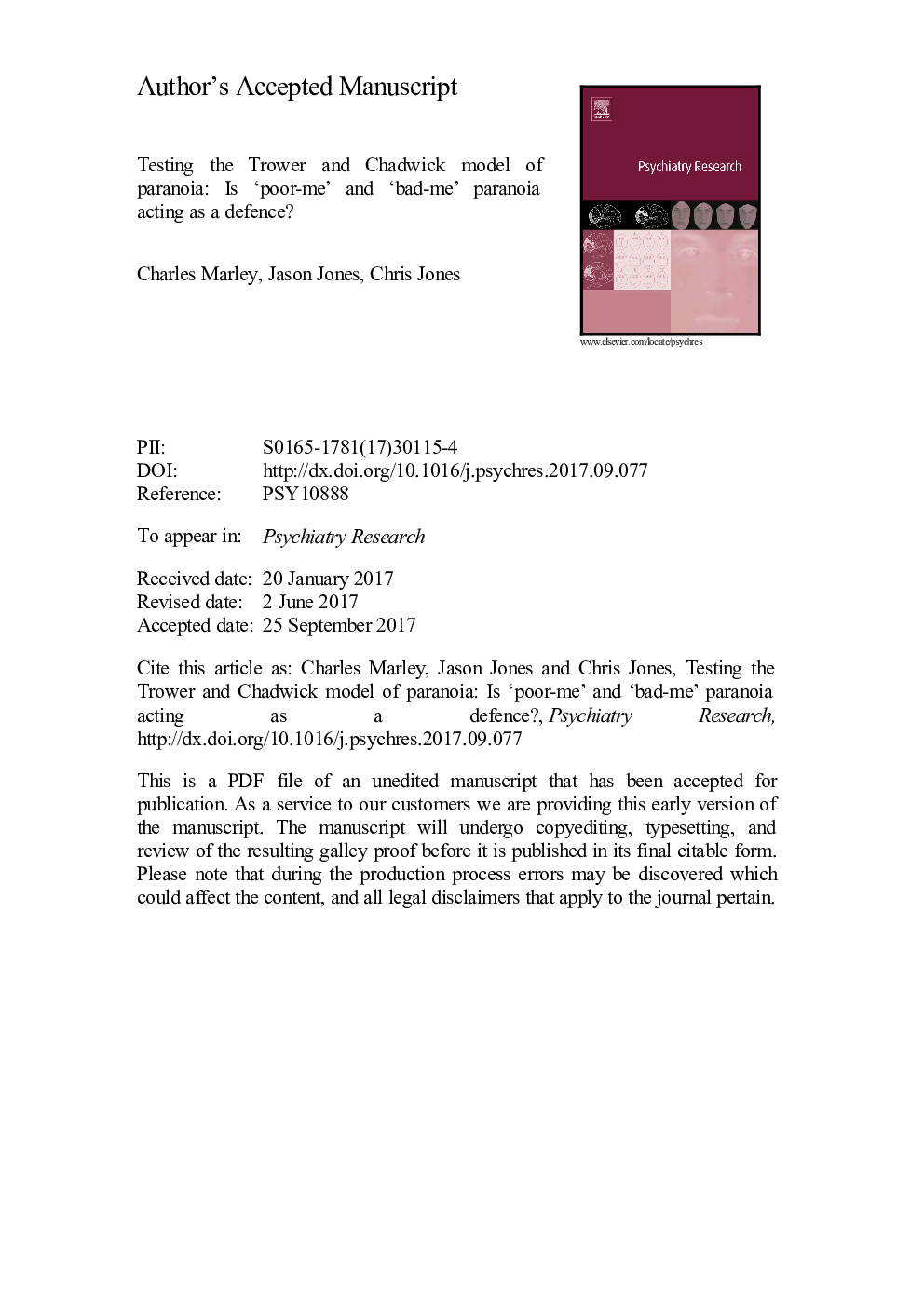| Article ID | Journal | Published Year | Pages | File Type |
|---|---|---|---|---|
| 4933245 | Psychiatry Research | 2017 | 24 Pages |
Abstract
The study tested the predicted differences in phenomenology (self-esteem and depression) and insecurity of the subgroups of paranoia proposed by the Trower and Chadwick (1995) model of paranoia. Thirty-two inpatients experiencing persecutory delusions were assigned to either the poor me or bad me paranoid group. Questionnaire assessment of depression and self-esteem were conducted. A Dot Probe task measured detection latency (reaction time) to poor me words, bad me words and neutral words. The poor me and bad me groups displayed the predicted phenomenological differences. The dot probe task did not support the predicted insecurities of the Trower and Chadwick model, but unexpected significant results for the poor me subgroup may offer support for an alternative explanation of paranoia as an unstable phenomenon.
Related Topics
Life Sciences
Neuroscience
Biological Psychiatry
Authors
Charles Marley, Jason Jones, Christopher A. Jones,
